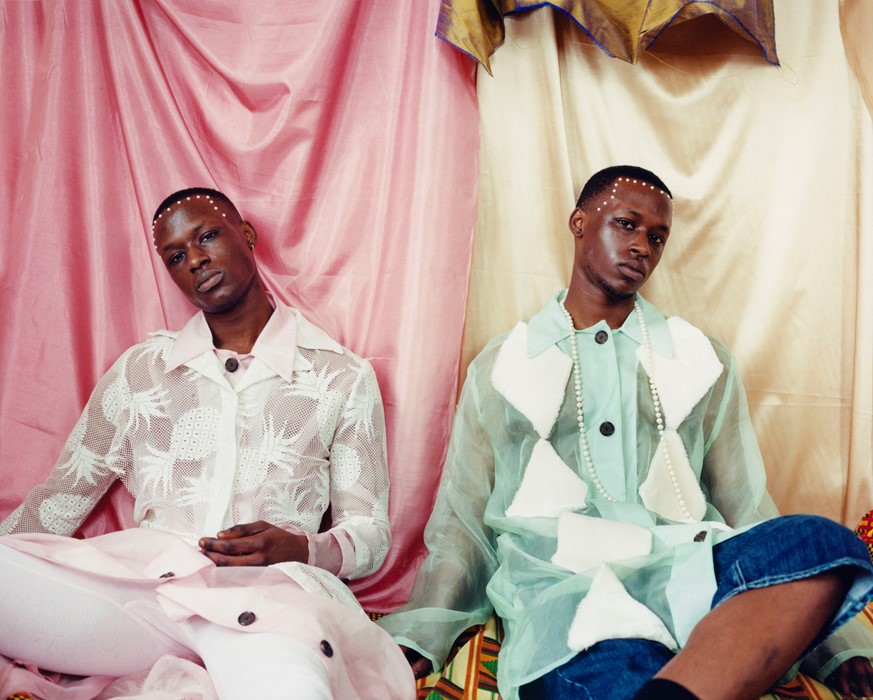Photography powerhouses Magnum and Aperture have teamed up for Crossings, a sale in which iconic photographs can be bought for just $100
The opportunity to buy a piece of photographic history returns with Magnum’s Square Print Sale, this time presented in collaboration with Aperture. A mammoth selection of images by both Magnum and Aperture photographers are available to buy this week for just $100, with each connecting in some way to the idea of Crossings. Here are 10 of our favourites.
1. Tyler Mitchell (above)
23-year-old Tyler Mitchell this year became the first African-American photographer to shoot a Vogue cover, capturing Beyoncé for the American magazine’s September issue. His work is notable for using vibrant, saturated tones inspired by 1990s skate movies, often depicting people of colour throughout the world. With this photograph Mitchell set out to make a study of “black masculine freedom”; the twins, Torey and Khorey, are decorated with pearls on their faces and around their necks and wear sugary hued textiles. The resulting “fictional image of black men having a full and free range of expression” creates “a world where documentary and fantasy intersect”.
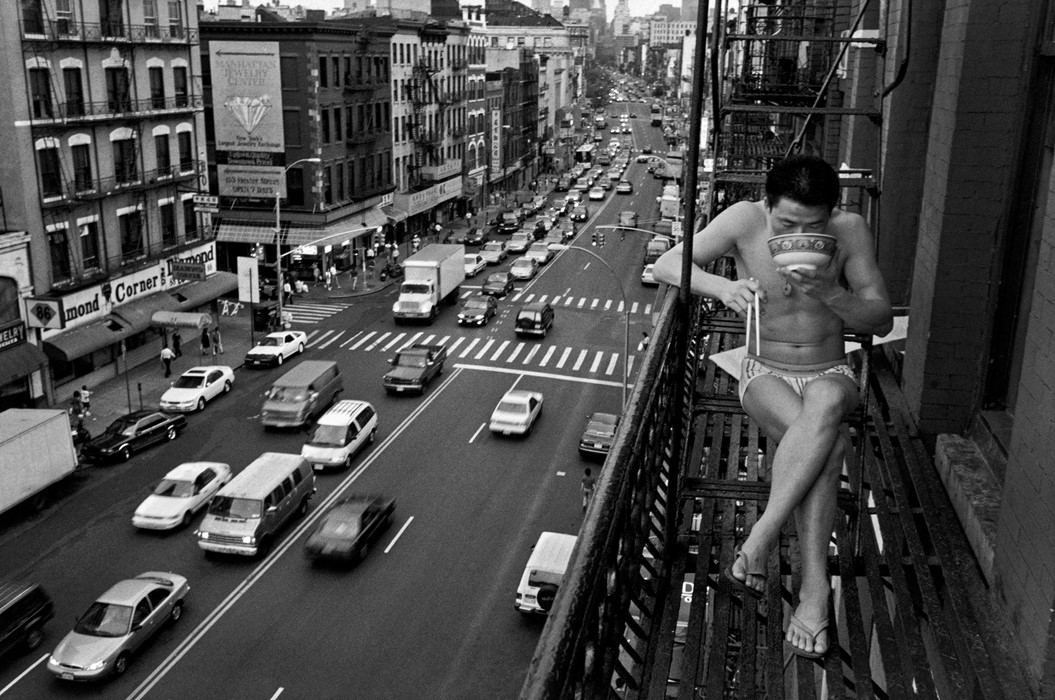
2. Chien-Chi Chang
The act of immigrating or migrating – literally crossing borders – is a phenomenon many photographers have chosen to make their subject, and in the late 90s Chien-Chi Chang was in the midst of project about immigrants in New York’s Chinatown, a series he began in 1992, and continues to work on today. “Humans need to hold hope in their hands,” the Magnum photographer writes. “This man was willing to live in poverty in hope of prosperity, to sacrifice his immediate happiness to realise the dream of giving his children a better life.” As part of the series Chang also recorded the lives of the family members who stayed behind in China while some moved to the US, and his own experiences as a Taiwanese-American photographer who has lived in both countries has informed his approach. “A few years later, this man was able to bring his family to New York, and today they are living the American dream. He is now a grandfather! But is economic prosperity worth the social cost?”
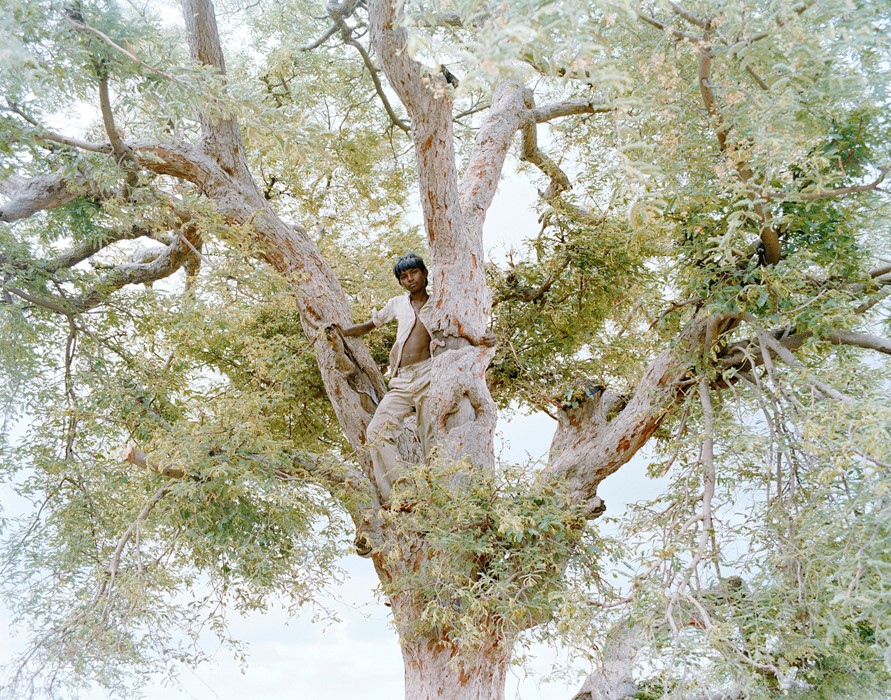
3. Sohrab Hura
“The higher he climbed up the branches the more he turned into the tree himself,” says Magnum photographer Sohrab Hura of his image of a young boy up a tree in Savariyapani, a village in Barwani, India. Hura has photographed summer in the village and its “barren landscape”, which is situated in one of India’s hottest areas, in his series The Song of Sparrows in a Hundred Days of Summer. “The grand old tree, the last remaining vestige of what was once a sea of trees surrounding the village, would bring him into view of the lit-up town that shimmered in the violet of warm summer evenings.”
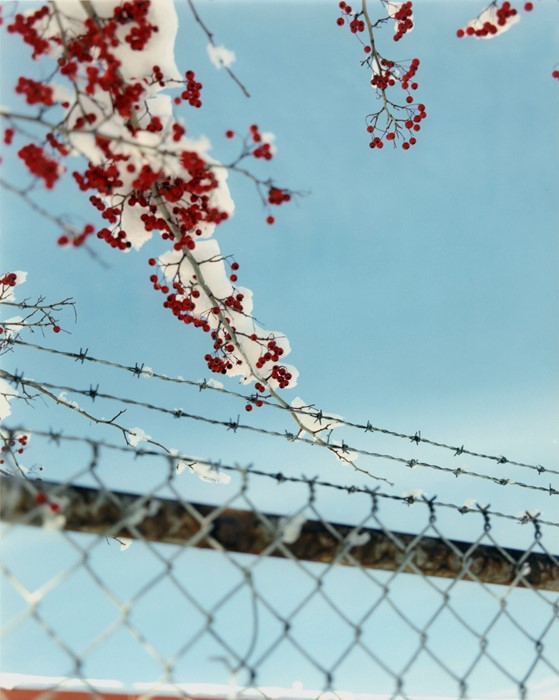
4. Gregory Halpern
The juxtaposition of a barbed wire fence and a snow-covered branch of berries against a crisp blue sky makes for a compelling scene in Gregory Halpern’s 2015 photograph. There is ambiguity in Halpern’s rendering, presented as it is without context or even a title. “I made this picture not far from where I grew up, in Buffalo, New York. I suppose the pictures that generally sustain my interest are the ones that have some kind of tension built into them,” the photographer explains. Something about the scene struck a chord with Halpern: “In a basic sense, photographers look for things in the external world that, for whatever reason, resonate internally. This ambitious little branch did just that.”
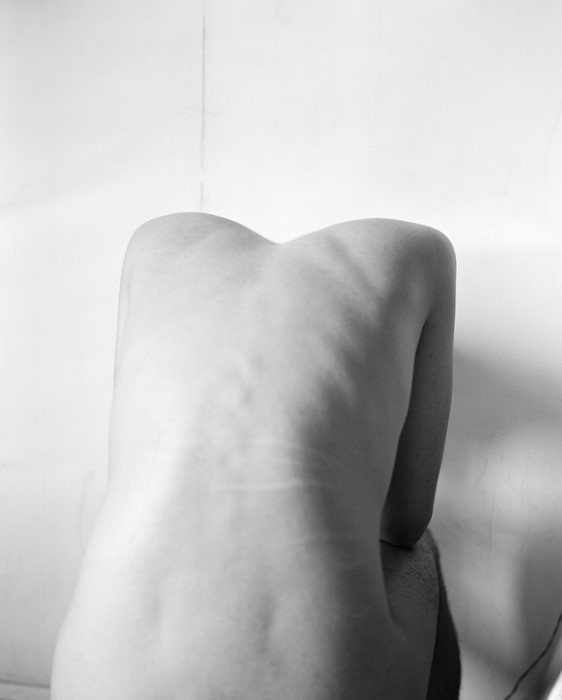
5. Olivia Arthur
“An exploration of privacy, sexuality and the changing atmosphere in the city of Mumbai,” Magnum photographer Olivia Arthur’s contribution to Crossings comes from her 2016 series In Private, Bombay. It’s telling of the “contradictory atmosphere”, as Arthur calls it, in the city at the time that her subject Nikhil is baring all and nothing at the same time: he is nude, but all the viewer sees is his back, his head and neck bent so low that they disappear and form a valley between his shoulders. “At once an opening up of voices, boldness and desire to talk about sexuality. Yet, at the same time, there was growing Hindu conservatism and seeming regression across the country,” Arthur writes of her compelling photograph. “The combination of audacity and intolerance made for a feeling of friction as well as excitement.”
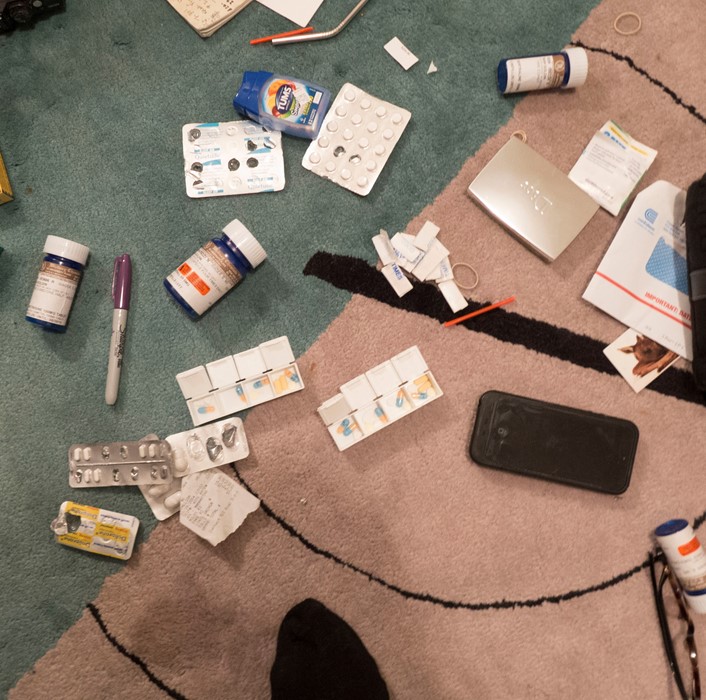
6. Nan Goldin
The simplicity of Goldin’s snapshot of scattered OxyContin packages sprawled over the carpet reflects the state of devastation and damage done to those who have suffered addiction. Goldin’s upbringing in Boston and life in New York shaped her highly personal photography, which often explores subjects like LGBTQ communities and the HIV epidemic, and more recently America’s opioid crisis. The photographer has been directly affected by the latter: “I was addicted to OxyContin for four years. I overdosed but I came back. I decided to make the personal political.” Through her group P.A.I.N. (Prescription Addiction Intervention Now), Goldin and her fellow artists, activists and addicts give voice to “the 250,000 bodies that no longer can” by targeting the family that has profited from the drug’s manufacture and distribution, and proceeds from the sale of this print will go towards funding P.A.I.N.’s work.
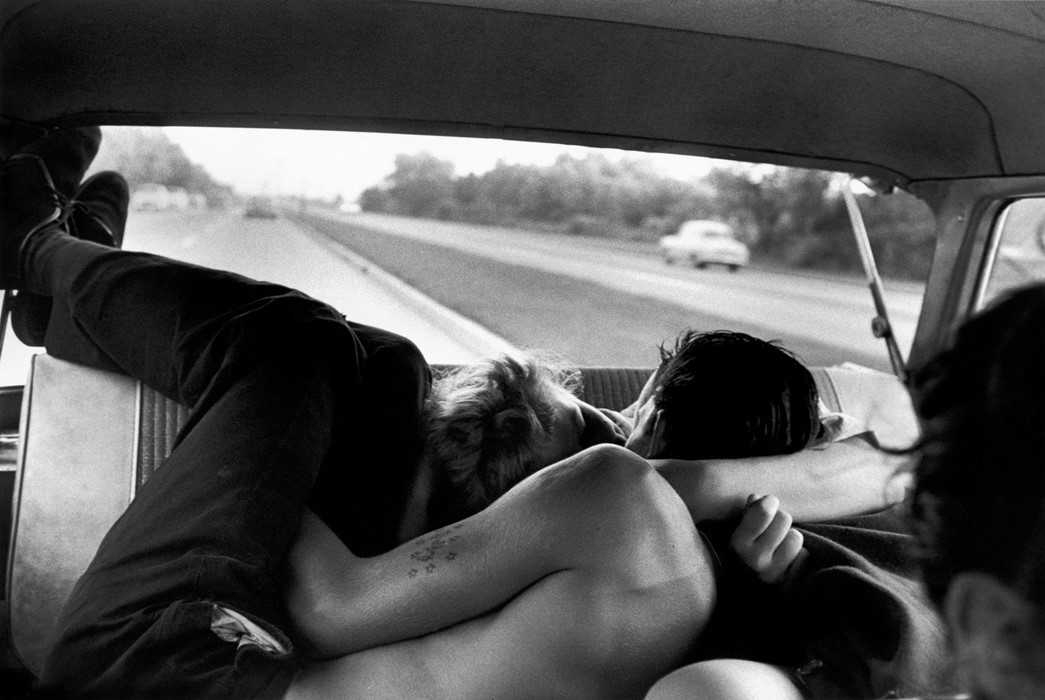
7. Bruce Davidson
Bruce Davidson started taking photographs at the age of 10, when his single mother built a darkroom in their basement. Davidson’s immersion and collaboration with his subjects allows him to capture powerful moods, his proximity in turn enabling the viewer to identify with the image and become momentarily part of the community. The extent of his engagement with his subjects is revealed in this intimate photograph of “Lefty and his girlfriend, members of a Brooklyn gang who referred to themselves as ‘The Jokers’” in the back of a car, captured in an embrace. “This photograph is not meant to be risqué,” says the photographer. “These were young, teenage kids who had a great deal of spirit, energy and love in lives that were reckless, unstable and oftentimes dangerous.” Davidson, who had been photographing The Jokers for his first series Brooklyn Gangs, was drawn in by this unusual scenario: “The gang was completely out of their element. No mean streets, not a worry on their minds, just time to explore themselves and their surroundings. They were free, and it was captivating.”
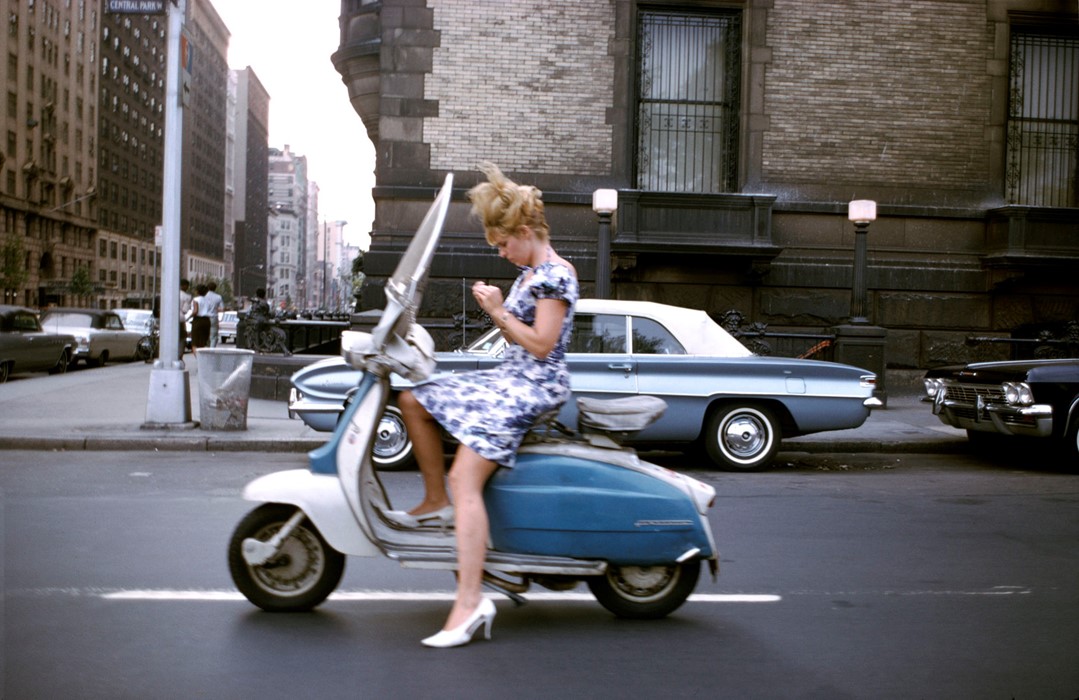
8. Joel Meyerowitz
Joel Meyerowitz, who began taking photographs in 1962, was one of the earliest and most proficient advocates of colour photography. In his 1965 shot of a girl on a Vespa “on her way to who knows where”, the fleeting moment is highlighted with subtle, hazy hues of blue set against the crossing at New York’s 72nd Street. Meyerowitz himself scrambled to get this image as she “finesse[s] a fingernail”, describing his “leap into the street to capture this vision of a dream girl before time takes her on her way”.

9. René Burri
René Burri’s continuous curiosity is evident within his striking geometric compositions, a trait that made him one of the greatest Humanist photographers. His photographs capture a perfect combination of story and form, and express a transcending cultural and emotional sensitivity illustrated by a balance between the beauty of humanity and linear, rigid architecture. Burri’s 1960 photograph taken at the Ministry of Health Building in Rio de Janeiro combines these elements: architectural grandeur, shadow play and a passing glance between groups of men and women. The photographer’s unique attitude to the world is reflected in his ethos, to “go and discover for yourself, because the fantastic thing about photography is that you are able to freeze a moment that can never come back”.
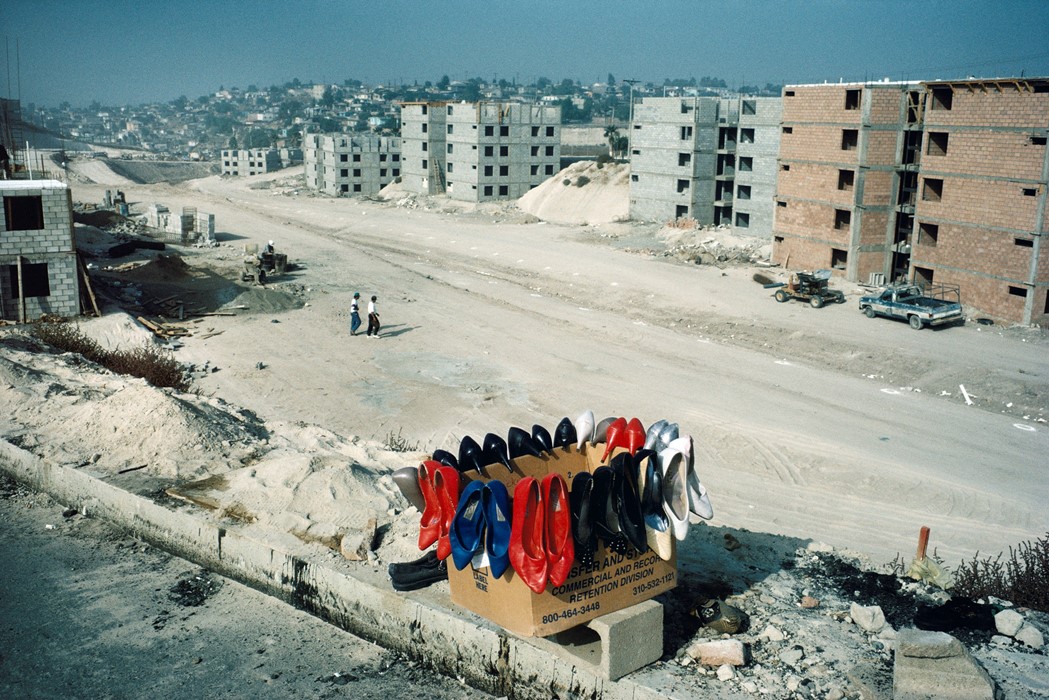
10. Alex Webb
Alex Webb admits to a long held fascination with the unique “transience and paradoxes of the US–Mexico border” and photographed the region over 25 years (the project, Crossings, was published in 2003). During his quest to make sense of the surreal stretch of land – that seemed sometimes “like a third country” to him – he came across a box of shoes on the outskirts of Tijuana in 1995. Webb never solved the mystery of the abandoned shoes on the “dusty, isolated embankment”. “I looked around for some kind of explanation,” he remembers. “Was there a market here earlier – and these shoes left behind? Had women exchanged these high heels for more comfortable footwear, before heading to work in a nearby maquiladora? Or had the shoe vendor simply left during the hottest time of the day? In my bad Spanish, I asked a passer-by if he knew. The old man just shrugged his shoulders.”
Crossings: The Magnum Square Print Sale in Partnership with Aperture takes place from October 29 – November 2, 2018.
